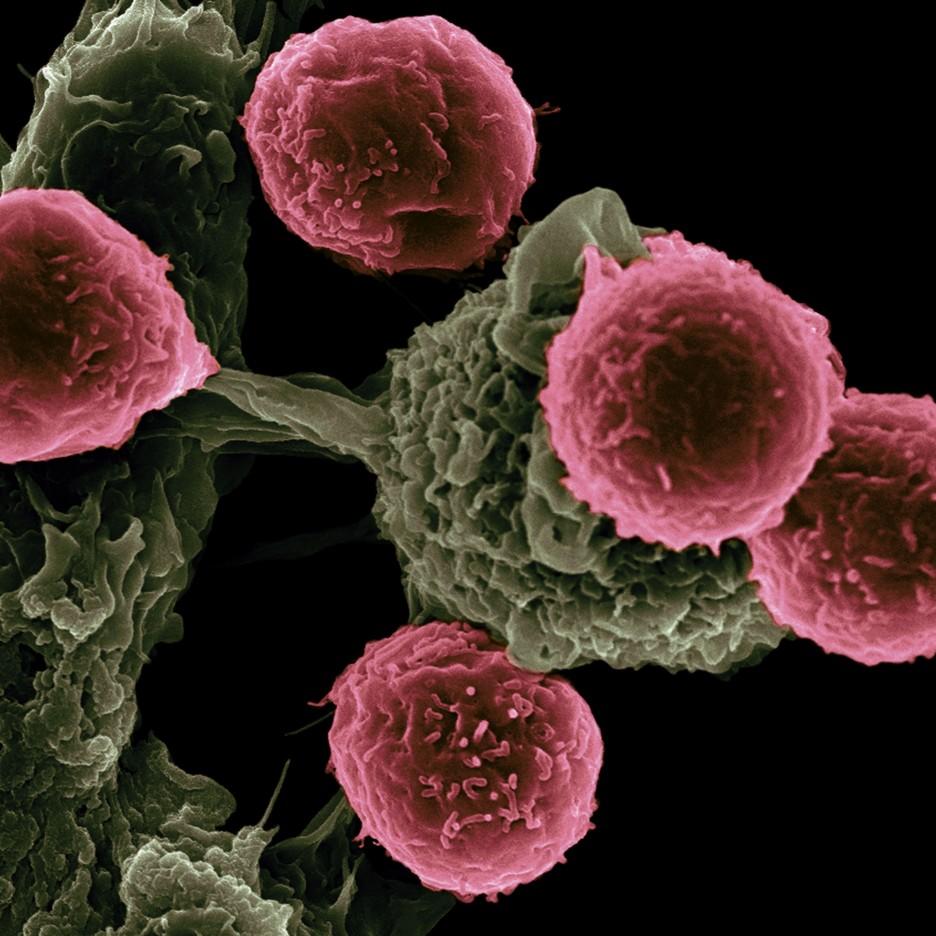How do cancer treatment vaccines work against cancer?
Cancer treatment vaccines are a type of immunotherapy that treats cancer by strengthening the body’s natural defenses against the cancer. Unlike cancer prevention vaccines, cancer treatment vaccines are designed to be used in people who already have cancer—they work against cancer cells, not against something that causes cancer.
The idea behind treatment vaccines is that cancer cells contain substances, called tumor-associated antigens, that are not present in normal cells or, if present, are at lower levels. Treatment vaccines can help the immune system learn to recognize and react to these antigens and destroy cancer cells that contain them.
Cancer treatment vaccines may be made in three main ways.
- They can be made from your own tumor cells. This means they are custom-made so that they cause an immune response against features that are unique to your cancer.
- They may be made from tumor-associated antigens that are found on cancer cells of many people with a specific type of cancer. Such a vaccine can cause an immune response in any patient whose cancer produces that antigen. This type of vaccine is still experimental.
- They may be made from your own dendritic cells, which are a type of immune cell. Dendritic cell vaccines stimulate your immune system to respond to an antigen on tumor cells. One dendritic cell vaccine has been approved, sipuleucel-T, which is used to treat some men with advanced prostate cancer.
A different type of cancer treatment, called oncolytic virus therapy, is sometimes described as a type of cancer treatment vaccine. It uses an oncolytic virus, which is a virus that infects and breaks down cancer cells but does not harm normal cells.
The first FDA-approved oncolytic virus therapy is talimogene laherparepvec (T-VEC, or Imlygic®). It is based on herpes simplex virus type 1. Although this virus can infect both cancer and normal cells, normal cells are able to kill the virus while cancer cells cannot.
T-VEC is injected directly into a tumor. As the virus makes more and more copies of itself, it causes cancer cells to burst and die. The dying cells release new viruses and other substances that can cause an immune response against cancer cells throughout the body.
Which cancers are treated with cancer treatment vaccines?
Sipuleucel-T is used to treat people with prostate cancer:
- that has spread to other parts of the body
- who have few or no symptoms
- whose cancer does not respond to hormone treatment
T-VEC is used to treat some people with melanoma that returns after surgery and cannot be removed with more surgery.
What are the side effects of cancer treatment vaccines?
Cancer treatment vaccines can cause side effects, which affect people in different ways. The side effects you may have and how they make you feel will depend on how healthy you are before treatment, your type of cancer, how advanced it is, the type of treatment vaccine you are getting, and the dose.
Doctors and nurses cannot know for sure when or if side effects will occur or how serious they will be. So, it is important to know which signs to look for and what to do if you start to have problems.
Cancer treatment vaccines can cause flu-like symptoms, which include:
- fever
- chills
- weakness
- dizziness
- nausea or vomiting
- muscle or joint aches
- fatigue
- headache
- trouble breathing
- low or high blood pressure
Learn more about flu-like symptoms caused by cancer treatment.
You may have a severe allergic reaction.
Sipuleucel-T can cause stroke.
T-VEC can cause tumor lysis syndrome. In this syndrome, the tumor cells die and break apart in the blood. This changes certain chemicals in the blood, which may cause damage to organs like the kidneys, heart, and liver.
Since T-VEC is made from herpesvirus it can sometimes cause a herpesvirus infection that can lead to:
- pain, burning, or tingling in a blister around the mouth, genitals, fingers, or ears
- eye pain, sensitivity, discharge from the eyes, and blurry vision
- weakness in the arms and legs
- extreme fatigue and drowsiness
- confusion
